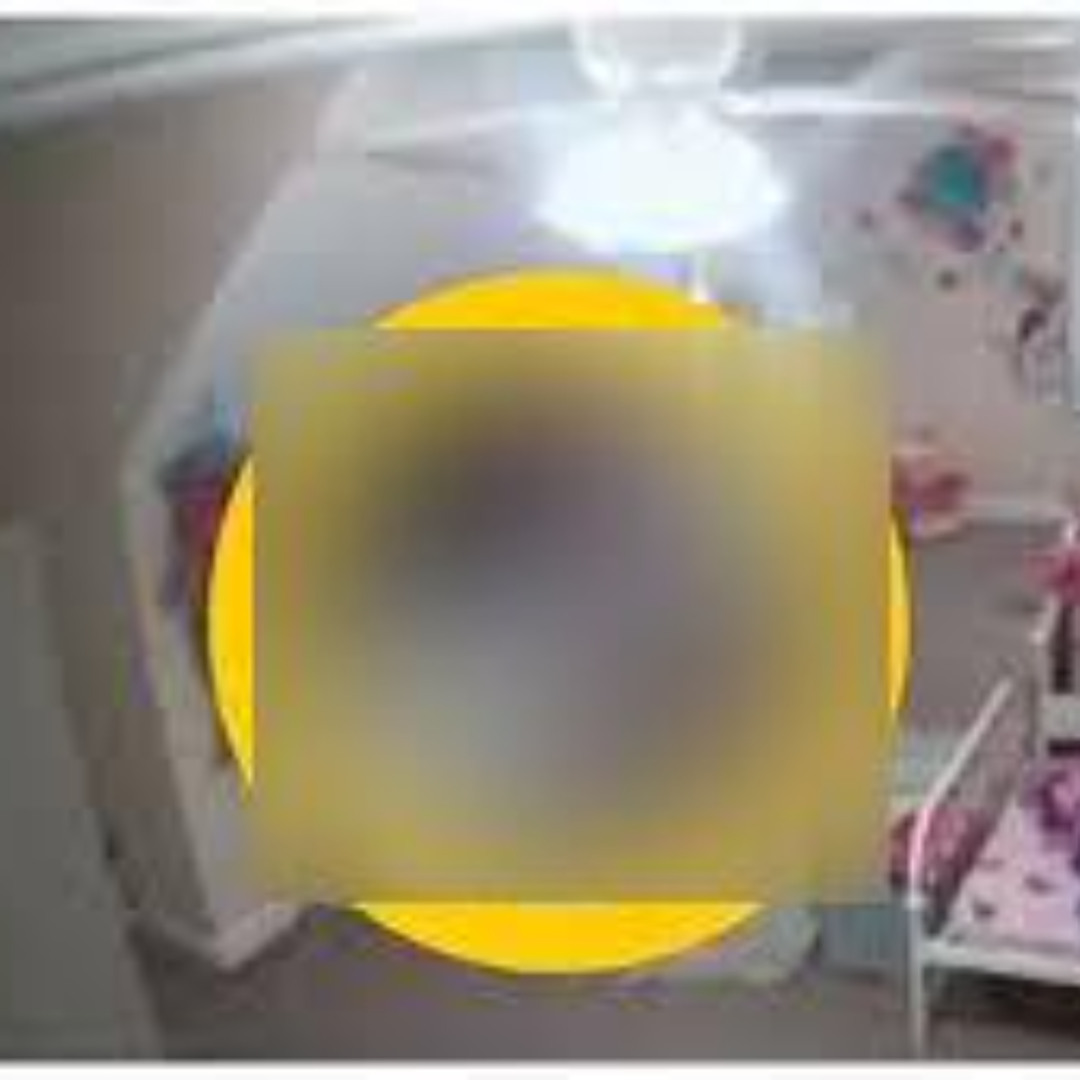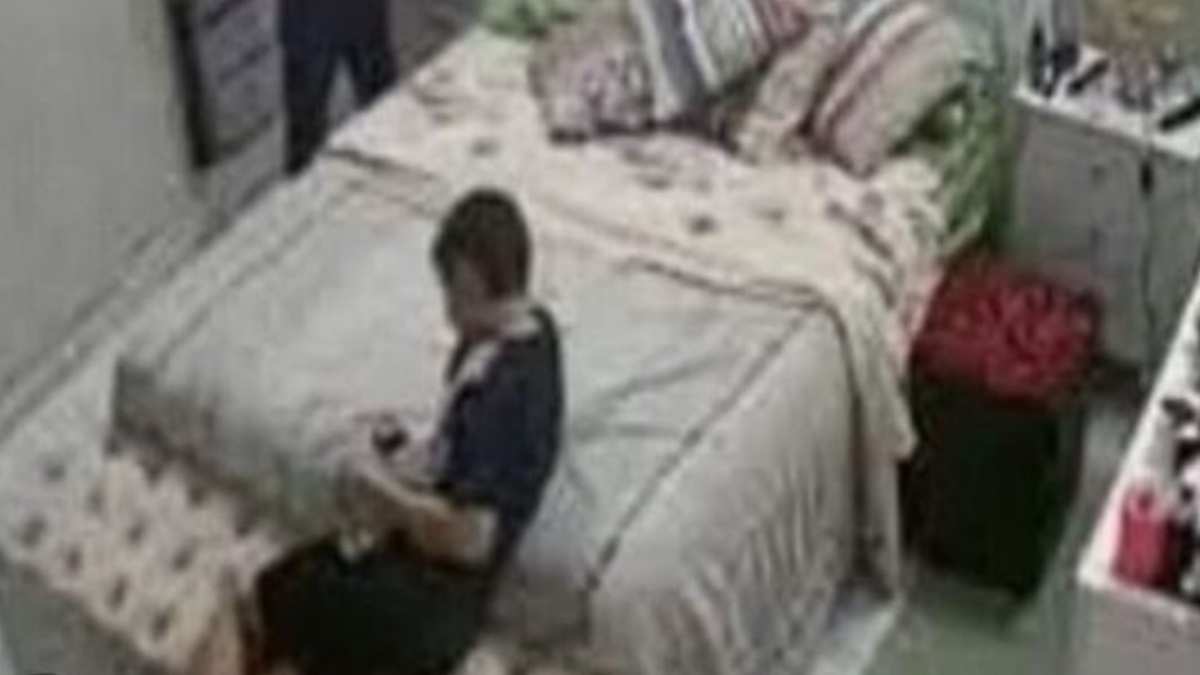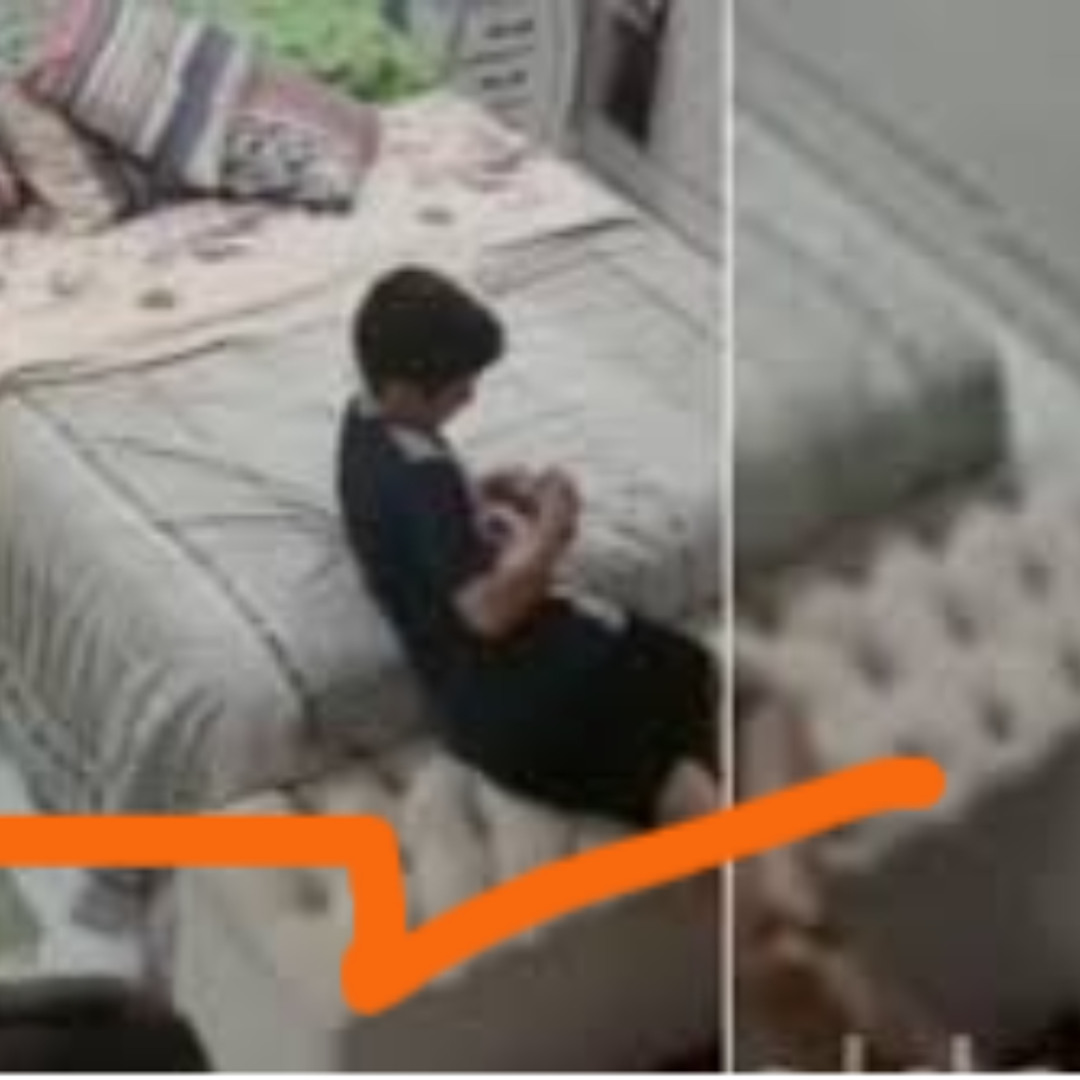Have we truly considered the implications of a world constantly under surveillance, where even the most mundane moments can be captured and dissected? The pervasive nature of CCTV cameras has transformed our understanding of privacy, thrusting ordinary individuals into the spotlight and igniting fervent debates about the ethical boundaries of technology.
The "buscar kid and his mom cctv incident" serves as a stark reminder of this reality. What initially began as a seemingly isolated event captured on surveillance footage quickly spiraled into a global phenomenon, raising profound questions about the intersection of privacy, parenting, and the relentless scrutiny of social media. The incident, though specific in its details, resonates with broader anxieties surrounding the ever-watchful eye of technology and its potential to impact our lives in unforeseen ways. Understanding the nuances of this incident requires a careful examination of the context in which it occurred, the individuals involved, and the ensuing public discourse that shaped its narrative.
| Buscar Kid and Mom: Background Information | |
|---|---|
| Category | Details |
| Incident Name | Buscar Kid and Mom CCTV Incident |
| Type of Incident | Viral CCTV Video |
| Key Themes | Privacy, Parenting, Social Media Impact, Surveillance, Ethics of Technology |
| Context | The incident occurred within a society increasingly monitored by surveillance cameras, leading to widespread capture of daily events. |
| Impact | Sparked global discussions and debates concerning the balance between security measures, personal privacy, and parental responsibility. |
| Public Reaction | Varied opinions and reactions across different social media platforms, showcasing the diverse views of the public. |
| Ethical Concerns | Raises ethical questions regarding the use of surveillance technology and the protection of individuals' privacy rights. |
| Legal Implications | Potential legal discussions concerning privacy rights and the dissemination of personal footage without consent. |
| Related Links | For a broader understanding of surveillance and privacy, refer to the Electronic Frontier Foundation: EFF.org |
The viral nature of the "buscar kid and his mom cctv incident" is a testament to the power of social media and its ability to amplify even the most seemingly insignificant events. Within hours of the footage surfacing online, it had been shared, commented upon, and dissected by millions of users around the world. This rapid dissemination of information, often devoid of context or verification, highlights the challenges of navigating the digital age, where rumors and speculation can quickly take on a life of their own. The incident also underscores the importance of media literacy and critical thinking in an era where we are constantly bombarded with information from a multitude of sources.
- Who Are Michael Ealys Siblings Info You Need
- Who Is Michael Ealy The Actors Roles Career And More 2024 Update
The public reaction to the "buscar kid and his mom cctv incident" has been varied and complex, reflecting the diverse perspectives and values of individuals across different cultures and backgrounds. Some have expressed outrage at the perceived invasion of privacy, arguing that the individuals involved were unfairly targeted and subjected to unwarranted scrutiny. Others have focused on the potential implications for parenting, using the incident as an opportunity to debate the best ways to raise children in an increasingly complex and interconnected world. Still others have viewed the incident as a cautionary tale, highlighting the risks of living in a society where every action can be recorded and shared with the world.
Media coverage of the "buscar kid and his mom cctv incident" has further amplified its impact, shaping public perception and influencing the narrative surrounding the event. While some media outlets have approached the story with sensitivity and nuance, others have sensationalized the footage, focusing on the most controversial aspects and exacerbating the negative consequences for those involved. This disparity in reporting highlights the ethical responsibilities of journalists and media organizations in the digital age, particularly when dealing with sensitive or potentially harmful content.
Exploring the background of the individuals involved in the "buscar kid and his mom cctv incident" is crucial to understanding the full context of the situation. While details may be limited, it is important to recognize that these are real people with lives, families, and feelings. They are not merely characters in a viral video, but individuals who have been thrust into the public eye through no fault of their own. By humanizing the subjects of the incident, we can move beyond the superficial and engage with the deeper ethical and social issues at stake.
- Breaking Down Brittany Mahomes Net Worth Facts Amp Figures
- Decoding Blackpink All About Blackpink Members Their Influence
Examining the implications of the footage itself is also essential. What does the video actually depict? What are the possible interpretations of the events that transpired? Without access to the full story and the perspectives of those involved, it is impossible to draw definitive conclusions or assign blame. However, by carefully analyzing the available evidence, we can gain a better understanding of the complexities of the situation and the challenges of interpreting surveillance footage in isolation.
The "buscar kid and his mom cctv incident" raises important questions about the role of surveillance cameras in our society. While these cameras are often touted as a means of enhancing security and deterring crime, they also pose a significant threat to privacy and civil liberties. The widespread deployment of CCTV cameras can create a chilling effect, discouraging individuals from engaging in lawful activities and fostering a climate of suspicion and distrust. Furthermore, the data collected by these cameras can be misused or abused, potentially leading to discrimination, harassment, and other forms of harm.
The incident also highlights the challenges of parenting in the digital age. Parents are now faced with the daunting task of raising children in a world where their every move can be recorded, shared, and scrutinized by millions of strangers online. This constant surveillance can create added pressure and anxiety for parents, making it difficult to navigate the already complex terrain of child-rearing. Furthermore, the ease with which children can access and share content online poses new risks and challenges for parents, who must constantly monitor their children's online activities and educate them about the dangers of the internet.
The impact of social media on the "buscar kid and his mom cctv incident" cannot be overstated. Social media platforms have become the primary means by which information is disseminated and opinions are formed in the digital age. While these platforms can be powerful tools for communication and connection, they can also be breeding grounds for misinformation, hate speech, and cyberbullying. The rapid spread of the "buscar kid and his mom cctv incident" on social media underscores the need for greater regulation and accountability on these platforms, as well as increased media literacy and critical thinking skills among users.
Unveiling the true story of the "buscar kid and his mom's viral cctv video" requires a commitment to responsible reporting, ethical analysis, and a deep understanding of the complex issues at stake. It is not enough to simply rehash the details of the incident or offer simplistic judgments about the individuals involved. Instead, we must strive to understand the broader context in which the incident occurred, the perspectives of all stakeholders, and the potential implications for society as a whole. By doing so, we can contribute to a more informed and nuanced public discourse about privacy, technology, and the future of our digital world.
The incident also serves as a powerful reminder of the importance of empathy and compassion in the digital age. It is easy to judge and criticize others from the safety of our screens, but it is far more difficult to put ourselves in their shoes and understand their experiences. Before we rush to judgment, we should take a moment to consider the potential impact of our words and actions on those who are already vulnerable. By approaching the "buscar kid and his mom cctv incident" with empathy and understanding, we can help to create a more compassionate and humane online environment.
The "buscar kid and his mom cctv incident" is not an isolated event, but rather a symptom of a broader societal trend. As technology continues to advance and surveillance becomes increasingly pervasive, we are likely to see more incidents like this in the future. It is therefore imperative that we engage in a thoughtful and informed debate about the ethical boundaries of technology and the importance of protecting privacy and civil liberties. By doing so, we can help to ensure that technology serves humanity, rather than the other way around.
Ultimately, the "buscar kid and his mom cctv incident" is a reminder that we are all interconnected in the digital age. Our actions have consequences, and our words can have a profound impact on others. By embracing our shared responsibility to create a more ethical and compassionate online environment, we can help to prevent future incidents like this from occurring and build a better future for all.
The viral nature of the video also brings into focus the long-lasting consequences of online content. Once something is uploaded to the internet, it's incredibly difficult, if not impossible, to completely remove it. This digital footprint can follow individuals for years, potentially impacting their personal and professional lives. The "buscar kid and his mom cctv incident" serves as a stark warning about the permanence of online content and the need to be mindful of what we share and how it might be perceived.
Furthermore, the incident prompts a discussion about the role of bystanders. In the digital age, we are all, in a sense, bystanders to events unfolding online. What is our responsibility when we witness something that seems wrong or harmful? Do we have a duty to intervene, to report the content, or to offer support to those who are being targeted? These are complex questions with no easy answers, but they are questions that we must grapple with if we are to create a more ethical and responsible online community.
The legal ramifications of the "buscar kid and his mom cctv incident" are also worth considering. Depending on the jurisdiction and the specific circumstances of the case, there may be legal implications related to privacy rights, data protection, and the dissemination of personal information. Understanding these legal frameworks is crucial for both individuals and organizations that collect and process personal data, as well as for those who are affected by the misuse or abuse of such data.
In addition to the legal aspects, there are also ethical considerations related to the ownership and control of surveillance footage. Who owns the video captured by a CCTV camera? Who has the right to access and use that footage? These are questions that are often overlooked, but they are critical to ensuring that surveillance technology is used responsibly and ethically. Clear policies and procedures are needed to govern the collection, storage, and use of surveillance footage, with safeguards in place to protect privacy and prevent abuse.
The "buscar kid and his mom cctv incident" also raises questions about the role of technology companies in addressing online harm. Social media platforms and other online services have a responsibility to create safe and inclusive environments for their users. This includes taking steps to prevent the spread of misinformation, hate speech, and other harmful content, as well as providing support to those who are targeted by online abuse. Technology companies must invest in robust moderation systems and algorithms to detect and remove harmful content, and they must also work with law enforcement and other stakeholders to address illegal activities online.
Looking ahead, it is clear that the challenges posed by surveillance technology and social media are only going to become more complex. As technology continues to evolve, we will need to develop new frameworks and strategies for protecting privacy, promoting responsible online behavior, and addressing the ethical dilemmas that arise in the digital age. This will require a collaborative effort involving governments, technology companies, civil society organizations, and individuals.
The "buscar kid and his mom cctv incident" is a valuable case study for understanding the complexities of privacy, technology, and social media in the 21st century. By examining the incident from multiple perspectives and engaging in a thoughtful and informed debate, we can learn valuable lessons that will help us to navigate the challenges of the digital age and create a more just and equitable society for all.
The incident's repercussions extend beyond the immediate impact on the individuals involved. It touches upon the broader implications of living in a hyper-connected world where digital interactions can have far-reaching and often unforeseen consequences. The "buscar kid and his mom cctv incident" exemplifies how easily a private moment can become a public spectacle, highlighting the need for greater awareness and sensitivity in our online interactions.
Furthermore, the incident underscores the importance of digital literacy education. Equipping individuals with the skills to critically evaluate online content, understand privacy settings, and engage responsibly in online communities is essential in mitigating the risks associated with social media and surveillance technologies. Digital literacy should be integrated into educational curricula at all levels, empowering individuals to navigate the digital landscape safely and ethically.
The "buscar kid and his mom cctv incident" also prompts reflection on the role of empathy in online discourse. The anonymity afforded by the internet can sometimes lead to a lack of empathy and a tendency to engage in harsh or judgmental commentary. Cultivating a culture of empathy and understanding is crucial in fostering more constructive and supportive online interactions. Before posting a comment or sharing content, individuals should consider the potential impact of their actions on others and strive to engage in respectful and compassionate communication.
In addition to promoting empathy, it is also important to address the underlying biases and prejudices that can fuel online harassment and discrimination. The internet can amplify existing inequalities and create new forms of marginalization. By raising awareness of these biases and promoting diversity and inclusion online, we can create a more equitable and just digital environment.
The "buscar kid and his mom cctv incident" serves as a reminder that technology is not neutral. It can be used for good or for ill, depending on the intentions of those who wield it. It is our collective responsibility to ensure that technology is used in a way that promotes human dignity, protects privacy, and fosters a more just and equitable society. This requires a commitment to ethical principles, responsible innovation, and ongoing dialogue about the social implications of technology.
The incident also underscores the need for greater transparency and accountability in the use of surveillance technologies. Individuals should be informed about the presence of CCTV cameras and the purposes for which they are being used. Data protection laws should be strengthened to ensure that personal data is collected and processed fairly and securely. Independent oversight bodies should be established to monitor the use of surveillance technologies and investigate complaints of abuse.
The "buscar kid and his mom cctv incident" is a call to action. It is a reminder that we cannot afford to be complacent about the challenges posed by technology and social media. We must engage in a proactive and collaborative effort to create a more ethical, responsible, and equitable digital world. This requires a commitment to education, empathy, transparency, and accountability. Only by working together can we ensure that technology serves humanity, rather than the other way around.
The incident's impact is also felt in the realm of policy and regulation. Governments and regulatory bodies are increasingly grappling with the challenges of governing the digital space, balancing the need for security and public safety with the fundamental rights of privacy and freedom of expression. The "buscar kid and his mom cctv incident" highlights the complexities of this balancing act and the need for nuanced and evidence-based policies that protect both individual liberties and the public interest.
Furthermore, the incident underscores the importance of international cooperation in addressing the challenges of the digital age. The internet transcends national borders, and many of the issues raised by the "buscar kid and his mom cctv incident" require global solutions. International agreements and collaborations are needed to harmonize data protection laws, combat cybercrime, and promote responsible online behavior.
The "buscar kid and his mom cctv incident" is a microcosm of the larger challenges facing society in the digital age. It is a reminder that technology is a double-edged sword, capable of both great good and great harm. It is our responsibility to harness the power of technology for the benefit of humanity, while mitigating its risks and protecting the fundamental rights of all individuals.
The incident also underscores the need for ongoing research and analysis into the social and psychological effects of technology. We need to better understand how technology is shaping our brains, our relationships, and our societies. This research should be interdisciplinary, drawing on insights from psychology, sociology, neuroscience, and other fields.
The "buscar kid and his mom cctv incident" is a reminder that the digital world is not separate from the real world. Our online actions have real-world consequences, and we must treat each other with the same respect and compassion online as we do offline. By fostering a culture of empathy and understanding, we can create a more positive and productive online environment for all.
In conclusion, the "buscar kid and his mom cctv incident" is a complex and multifaceted event that raises important questions about privacy, technology, and society. By examining the incident from multiple perspectives and engaging in a thoughtful and informed debate, we can learn valuable lessons that will help us to navigate the challenges of the digital age and create a more just and equitable world for all.
- Breaking Down Brittany Mahomes Net Worth Facts Amp Figures
- Who Is Rick Ross Spouse Discovering Their Life 2024


